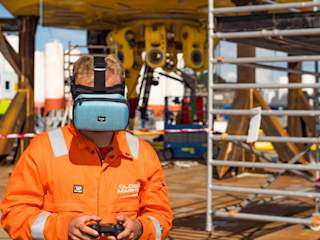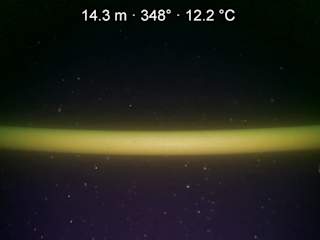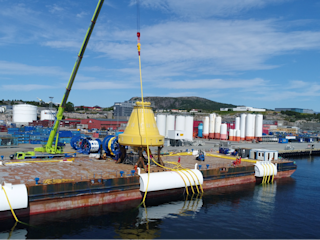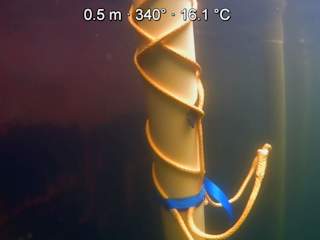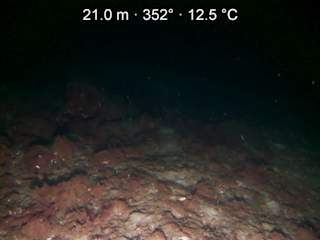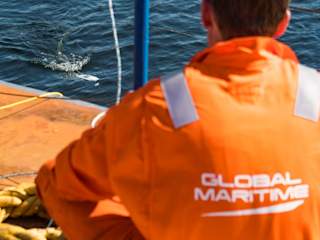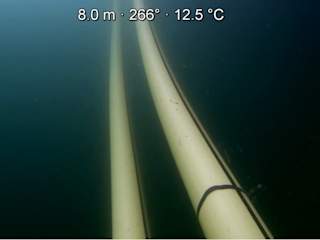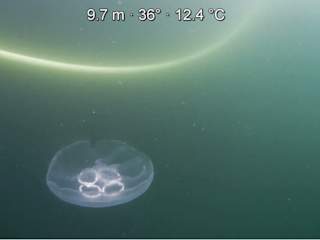The Njord oil & gas field has been active from 1997-2016 and is now undergoing extensive upgrades. It’s part of this project where Global Maritime has utilized the Blueye Pioneer underwater drone to monitor their work on the anchoring systems, making Njord ready to operate again in 2020.
The operation has been to launch an STL buoy and connect 8 x 100 m long wires to the buoy. This was executed on a quay in Kristiansund, Norway, in shallow waters. As these wires are 100 m long, it was necessary to launch them into the water carefully without risking entanglement. To follow this process with their own eyes, they used the Blueye Pioneer underwater drone. It was important to check the water depth and to monitor each wire while they were launched into the water, in addition making sure they never touched the seabed.


We’ve been totally dependent on having eyes below the surface to follow the cables while submerging. Without the Blueye Pioneer, we would have needed a whole crew of industrial ROV-pilots or divers. This would most likely be more expensive and less flexible than the Blueye drone. - Eivind Dysvik, Global Maritime

The benefits of utilizing underwater drones for visual monitoring:
- HD camera and video recording
- Auto-depth and auto-heading functions enable stable inspections
- Possibility to share the inspection live on multiple devices using the Blueye Dive Buddy App
- 3300 lumen LED lights for inspections at dark depths
- Dive down to 150 m
- Save time by utilizing your own eyes below the surface
Learn more about underwater drones and its use cases for professionals.
